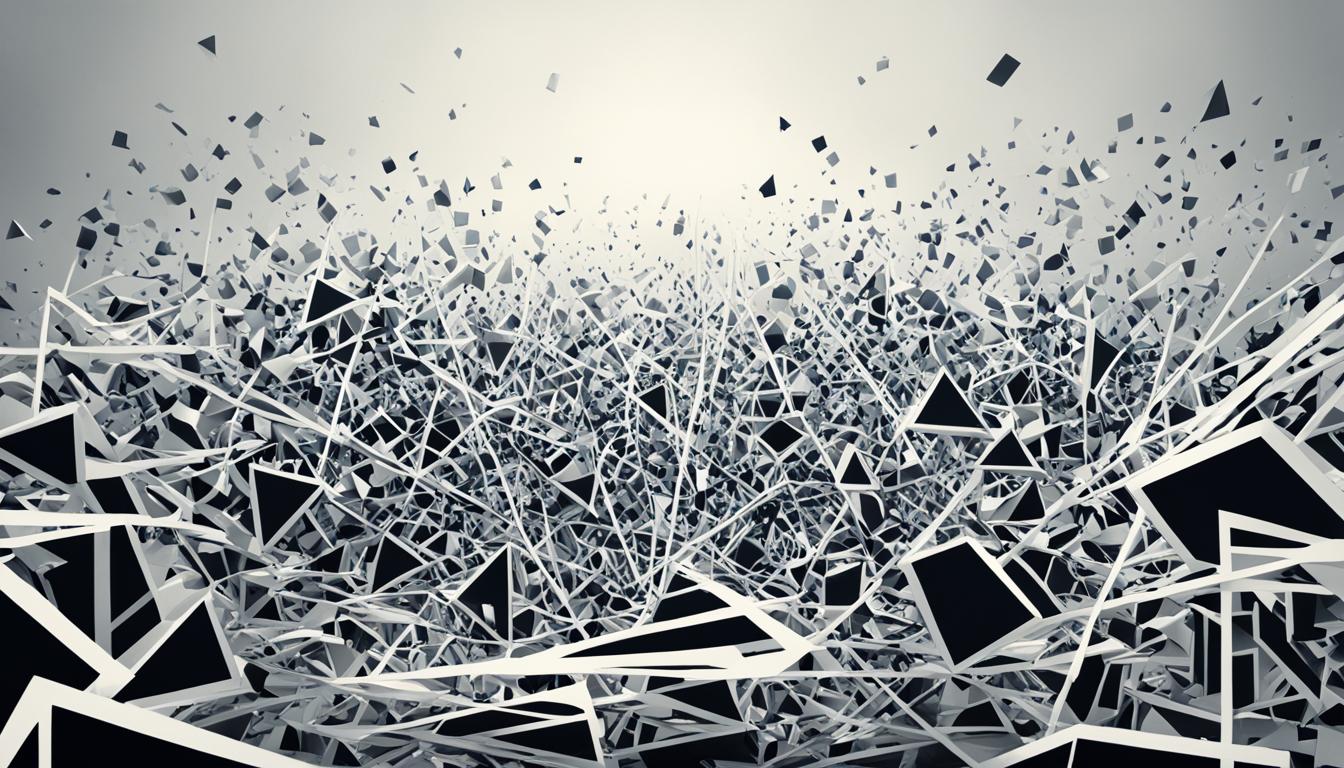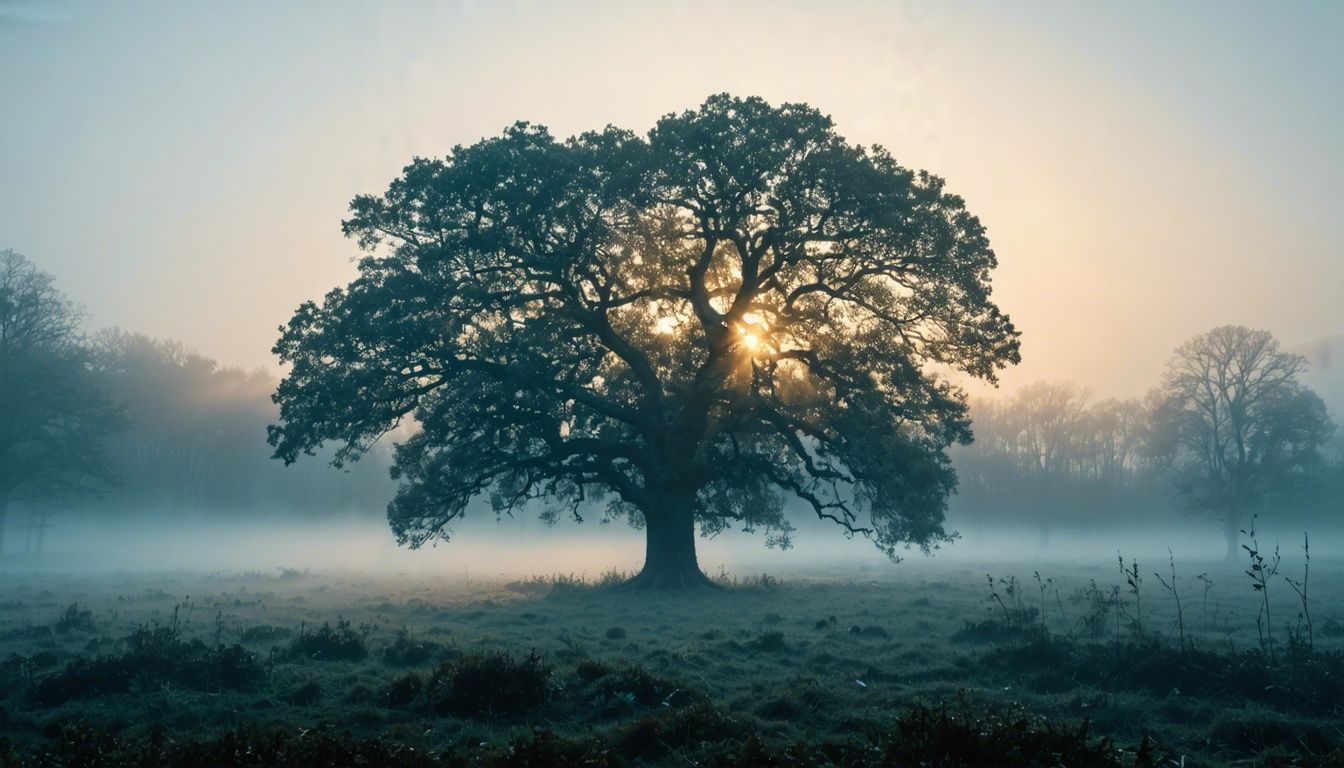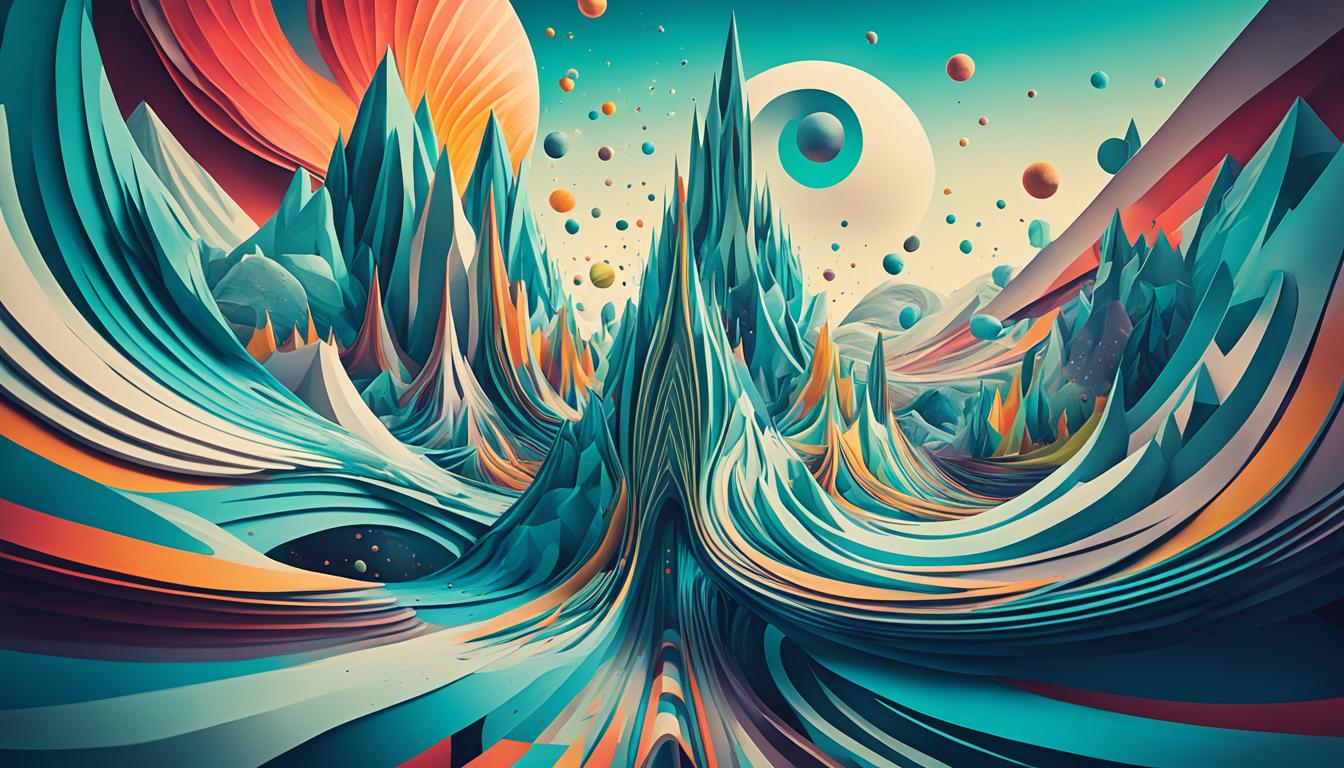Composition plays a crucial role in fine art imagery, elevating visual storytelling and enhancing the artistry in paintings and photography. It involves the arrangement and organization of visual elements within a piece of artwork to create a harmonious and impactful composition. By strategically placing elements such as lines, shapes, colors, and textures, artists can guide the viewer’s eye, convey emotions, and communicate their intended message. The role of composition in art has been recognized and explored by artists throughout history, leading to the development of various composition techniques and rules.
Key Takeaways:
- Composition plays a vital role in fine art imagery, enhancing visual storytelling and the overall artistry.
- Arrangement and organization of visual elements create harmonious and impactful compositions.
- Strategically placed elements guide the viewer’s eye, convey emotions, and communicate the artist’s intended message.
- Artists have developed various composition techniques and rules throughout history to enhance their artwork.
- Understanding and applying composition techniques allows artists to create visually compelling and meaningful artwork.
Importance of Composition in Photography
In photography, composition is an essential aspect that holds equal importance as in painting. It refers to the arrangement of elements within the frame to create captivating and impactful images. Proper composition determines how viewers perceive and interpret a photograph, allowing photographers to convey their intended message effectively.
By utilizing fine art composition techniques, photographers can create visually stunning and engaging images that captivate their audience. Some of these techniques include:
- Rule of Thirds: This technique involves dividing the frame into 9 equally-sized sections using two horizontal and vertical lines. By placing key elements along these lines or at their intersection points, photographers can create a balanced and visually pleasing composition.
- Leading Lines: Using lines, whether natural or man-made, to lead the viewer’s eye to the main subject of the photograph. This technique adds depth and visual interest to the composition.
- Symmetry: Utilizing symmetry in compositions can create a sense of balance and harmony. Symmetrical compositions can often be visually striking and draw the viewer’s attention.
- Balance: Achieving balance in a photograph involves distributing visual weight evenly. This can be done by considering the placement of various elements within the frame, ensuring that they complement each other and create a harmonious composition.
By applying these composition techniques, photographers can enhance the overall artistic quality of their photographs, create a visual impact, and effectively communicate their artistic vision. Composition allows photographers to guide the viewer’s attention, evoke emotions, and tell compelling visual stories through their images.
“The aim of art is to represent not the outward appearance of things, but their inward significance.” – Aristotle
The Evolution of Composition in Fine Art
The concept of composition in fine art has evolved over time. In the past, artists followed strict rules of composition, such as the golden ratio and the rule of thirds, to create balanced and harmonious compositions. These rules served as guidelines for arranging visual elements within a piece of artwork, ensuring a pleasing visual balance.
However, contemporary artists have embraced a more experimental approach to composition, breaking traditional rules and exploring new ways to create visual impact. They understand that composition is not just about achieving balance, but also about evoking emotions and challenging the viewer’s perception.
Contemporary artists incorporate unconventional composition techniques, using asymmetry and negative space to add interest and create visual tension. They also disrupt the balance intentionally to provoke emotions and create a dynamic visual experience for the viewer.
By pushing the boundaries of traditional composition, artists can effectively communicate their ideas and engage the viewer on a deeper level. The evolution of composition in fine art reflects the ever-changing nature of artistic expression and the desire to create thought-provoking and visually compelling artwork.
<!––>Integrating Composition in Artistic Expression
Composition is an integral part of artistic expression. It allows artists to visually communicate their ideas, emotions, and themes through the arrangement and organization of visual elements. By skillfully incorporating composition principles, artists can create a harmonious and cohesive artwork that resonates with the viewer. The composition becomes a tool for self-expression and a means to convey the artist’s unique perspective and creativity. Different art forms, such as painting, sculpture, and mixed media, offer diverse opportunities for artists to experiment with composition and create captivating and thought-provoking pieces.
The Power of Composition in Art
Artists have long recognized the power of composition in conveying their artistic vision. The deliberate placement of elements such as lines, shapes, colors, and textures brings balance, harmony, and visual impact to a piece of artwork. Through composition, artists can guide the viewer’s gaze, lead them through a narrative, evoke emotions, and create a sense of depth and movement.
“The arrangement of elements in a composition is like the conductor of an orchestra, directing the viewer’s attention and orchestrating the visual experience.” – Renowned artist, Sarah Adams
Exploring Composition Techniques
Artists can explore various composition techniques to enhance the artistic expression in their work. Some popular composition techniques include:
- The Rule of Thirds: Dividing the artwork into nine equal parts, placing key elements along the imaginary lines or at their intersection points.
- Leading Lines: Using lines to guide the viewer’s eye towards a focal point or create a sense of movement.
- Balance and Symmetry: Achieving visual equilibrium by distributing elements evenly or creating symmetrical compositions.
- Negative Space: Utilizing empty spaces to draw attention to the subject and create a sense of visual tension.
Case Study: The Harmonious Balance of Nature
In the painting “The Harmonious Balance of Nature”, artist Lauren Thompson skillfully integrates composition to express her deep connection with the natural world. Through a symmetrical composition and the use of leading lines, she draws the viewer’s attention to a solitary tree standing majestically in the center. The balance of elements, colors, and textures creates a serene atmosphere, conveying a sense of harmony and tranquility found in nature’s delicate balance.
| Composition Technique | Definition | Example |
|---|---|---|
| Rule of Thirds | A composition technique that divides the artwork into nine equal parts and places key elements along the imaginary lines or at their intersection points. |  |
| Leading Lines | Using lines to guide the viewer’s eye towards a focal point or create a sense of movement. | |
| Balance and Symmetry | Achieving visual equilibrium by distributing elements evenly or creating symmetrical compositions. | |
| Negative Space | Utilizing empty spaces to draw attention to the subject and create a sense of visual tension. |
The Impact of Composition on Visual Storytelling
Composition holds immense power in the realm of visual storytelling. It serves as a catalyst for artists to convey narratives, evoke emotions, and engage viewers on a profound level. Through meticulous arrangement of visual elements, artists guide attention, establish focal points, create depth and movement, and unveil the dynamics of their narrative.
With careful composition, layers of meaning and visual allure are added to artworks, enhancing their artistry and resonance. This intentional arrangement enables artists to communicate complex ideas and concepts in a visually captivating manner, leaving an indelible impression on the viewer.

Whether it’s a photograph capturing a fleeting moment or a painting illustrating a profound story, composition ignites the visual narrative and magnifies its impact. By leveraging composition techniques, artists seamlessly blend elements to create an immersive experience that conveys their intended message.
The significance of composition in artistry cannot be overstated. It is a powerful tool that enables artists to craft mesmerizing visuals that captivate and resonate with their audience. Through thoughtful arrangement and deliberate placement of visual elements, composition enriches the artistry, transforming a mere image into a masterpiece that speaks volumes.
The Influence of Composition on Pop Art
The pop art movement, which originated in the 1950s, revolutionized the art world by challenging traditional forms and embracing popular culture imagery. Artists like Andy Warhol and Roy Lichtenstein played a crucial role in this movement, using composition as a key tool to create visually impactful and thought-provoking artwork.
By integrating elements from mass media, advertisements, and everyday objects, these artists brought attention to banal or kitschy aspects of popular culture. The strategic use of composition allowed them to question the boundaries between high art and low culture, creating a unique commentary on consumerism and mass production.
Composition Techniques in Pop Art
In pop art, composition techniques are employed to grab the viewer’s attention and amplify the impact of the artwork. Here are some commonly used compositional approaches in pop art:
- Juxtaposition: Artists often juxtapose images from different sources to create a striking contrast and convey a specific message or concept.
- Repetition: Repetition of visual elements, such as repeated patterns or motifs, adds rhythm and visual interest to the artwork.
- Bold Colors: Vibrant and bold color choices contribute to the eye-catching nature of pop art compositions.
- Collage: Collage techniques, using cutouts from magazines or newspapers, add layers of visual complexity and create a dynamic composition.
Influential Pop Artists
Several iconic pop artists made significant contributions to the movement through their innovative use of composition. Here are two notable examples:
Andy Warhol: Known for his iconic screen-printed images of famous people and consumer products, Warhol’s compositions often featured repetitive patterns, bold colors, and vibrant backgrounds. His work blurred the line between art and mass production, creating a unique aesthetic and raising questions about celebrity culture and commercialization. Roy Lichtenstein: Lichtenstein’s compositions drew inspiration from comic books and popular advertising imagery. He emulated the bold outlines, Ben-Day dots, and vibrant colors characteristic of comic art, creating a distinctive pop art style that reinterpreted traditional fine art subjects.
Composition’s Impact in Pop Art
The strategic use of composition in pop art enhances the visual impact of the artwork and reinforces the underlying message. By employing bold colors, dynamic compositions, and recognizable imagery, pop artists engage viewers on both a visual and conceptual level. The deliberate arrangement of elements guides the viewer’s perception and highlights the intended narrative or social commentary.
The image above showcases the integration of composition techniques in a pop art piece. The use of vibrant colors, contrasting objects, and repetition creates a visually engaging composition that grabs attention and conveys the essence of the pop art movement.
To summarize, composition played a crucial role in the emergence and development of pop art. By skillfully employing composition techniques, pop artists broke free from traditional art norms and captivated audiences with their bold and thought-provoking works. The strategic use of composition in pop art continues to inspire contemporary artists and shape the boundaries of artistic expression.
Conclusion
In conclusion, the integration of composition in artistic expression is crucial for creating visually captivating and meaningful artwork. Whether in paintings, photography, or other art forms, composition plays a vital role in elevating visual storytelling and enhancing the overall artistry. By skillfully arranging and organizing visual elements, artists can guide the viewer’s attention, convey emotions, and communicate their intended message.
The evolution of composition in fine art reflects the ever-changing nature of artistic expression. Artists have moved beyond rigid rules and embraced a more experimental approach, breaking traditional boundaries to push the limits of creativity. Through asymmetry, negative space, and the strategic disruption of balance, artists can provoke emotions and challenge the viewer’s perception.
By understanding and applying composition techniques, artists can create harmonious and impactful compositions that resonate with the viewer. Composition becomes a powerful tool for self-expression, allowing artists to communicate their unique perspective and creativity. The composition’s impact in fine art imagery cannot be overstated, as it adds layers of visual appeal and enhances the overall artistic quality of the artwork, leaving a lasting impression on the viewer.
FAQ
What is the role of composition in fine art imagery?
Composition plays a crucial role in fine art imagery. It involves the arrangement and organization of visual elements within a piece of artwork to create a harmonious and impactful composition. By strategically placing elements such as lines, shapes, colors, and textures, artists can guide the viewer’s eye, convey emotions, and communicate their intended message.
Why is composition important in photography?
Composition is equally important in photography as it is in painting. In photography, composition refers to the arrangement of elements within the frame to create a visually pleasing and impactful image. The composition determines how the viewer perceives and interprets the photograph. By applying fine art composition techniques, such as the rule of thirds, leading lines, symmetry, and balance, photographers can create powerful and engaging images. The composition also helps convey the photographer’s intended message and enhances the overall artistic quality of the photograph.
How has the concept of composition in fine art evolved over time?
The concept of composition in fine art has evolved over time. In the past, artists adhered to strict composition rules, such as the golden ratio and the rule of thirds, to create balanced and harmonious compositions. However, contemporary artists have embraced a more experimental approach, breaking traditional rules and exploring new ways to create visual impact. They incorporate unconventional composition techniques, use asymmetry and negative space, and even disrupt the balance to provoke emotions and challenge the viewer’s perception. The evolution of composition in fine art reflects the ever-changing nature of artistic expression and the desire to push the boundaries of creativity.
How does composition enhance artistic expression?
Composition is an integral part of artistic expression. It allows artists to visually communicate their ideas, emotions, and themes through the arrangement and organization of visual elements. By skillfully incorporating composition principles, artists can create a harmonious and cohesive artwork that resonates with the viewer. The composition becomes a tool for self-expression and a means to convey the artist’s unique perspective and creativity. Different art forms, such as painting, sculpture, and mixed media, offer diverse opportunities for artists to experiment with composition and create captivating and thought-provoking pieces.
How does composition impact visual storytelling?
Composition plays a significant role in visual storytelling. It helps artists convey narratives, evoke emotions, and engage the viewer on a deeper level. Through the strategic arrangement of visual elements, artists can guide the viewer’s attention, establish a focal point, create a sense of depth and movement, and convey the dynamics of the narrative. The composition enhances the artistry by adding layers of meaning and visual appeal to the artwork. It allows artists to communicate complex ideas and concepts in a visually compelling way, leaving a lasting impression on the viewer.
How does composition influence pop art?
Composition played a crucial role in the emergence and development of pop art. Pop art movement, which originated in the 1950s, challenged traditional art forms and embraced popular culture imagery. Artists like Andy Warhol and Roy Lichtenstein integrated elements from mass media, advertisements, and everyday objects into their artwork. Through the strategic use of composition, they brought attention to banal or kitschy aspects of popular culture and questioned the boundaries between high art and low culture. The composition became a key tool for creating visual impact and conveying the artist’s commentary on consumerism and mass production.
What role does composition play in blending fine art photography with digital art?
Composition is crucial in blending fine art photography with digital art. The way elements are arranged within the frame can make or break the final piece. By utilizing strong composition techniques, artists can seamlessly merge the two mediums to create visually stunning and cohesive works of art.




